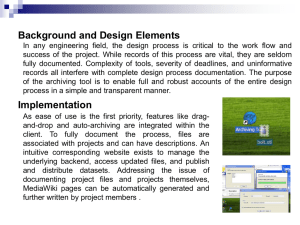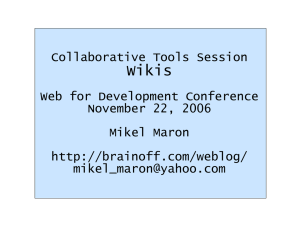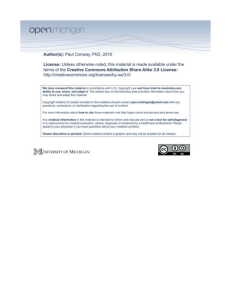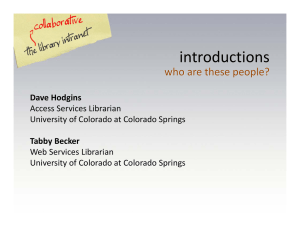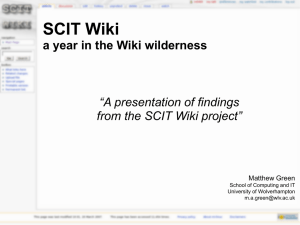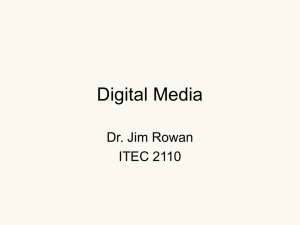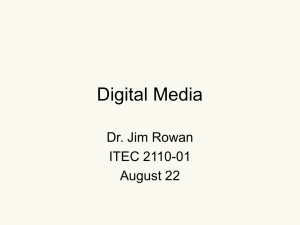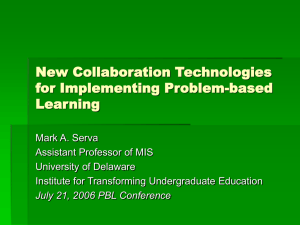MediaWiki Introduction Introduction
advertisement
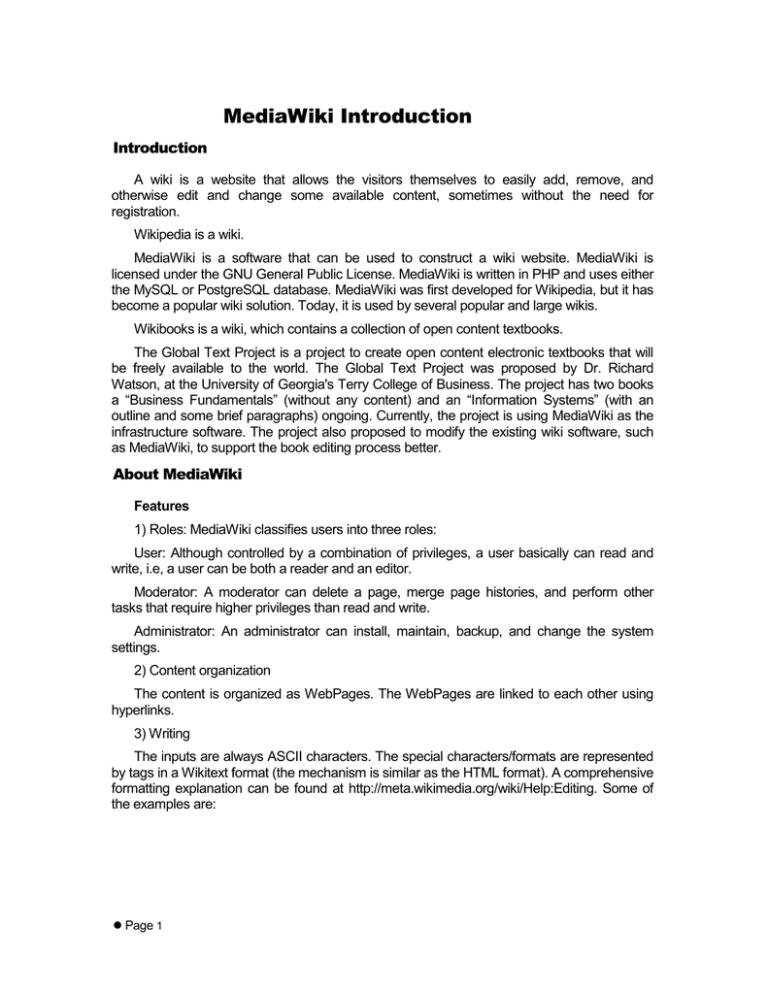
MediaWiki Introduction Introduction A wiki is a website that allows the visitors themselves to easily add, remove, and otherwise edit and change some available content, sometimes without the need for registration. Wikipedia is a wiki. MediaWiki is a software that can be used to construct a wiki website. MediaWiki is licensed under the GNU General Public License. MediaWiki is written in PHP and uses either the MySQL or PostgreSQL database. MediaWiki was first developed for Wikipedia, but it has become a popular wiki solution. Today, it is used by several popular and large wikis. Wikibooks is a wiki, which contains a collection of open content textbooks. The Global Text Project is a project to create open content electronic textbooks that will be freely available to the world. The Global Text Project was proposed by Dr. Richard Watson, at the University of Georgia's Terry College of Business. The project has two books a “Business Fundamentals” (without any content) and an “Information Systems” (with an outline and some brief paragraphs) ongoing. Currently, the project is using MediaWiki as the infrastructure software. The project also proposed to modify the existing wiki software, such as MediaWiki, to support the book editing process better. About MediaWiki Features 1) Roles: MediaWiki classifies users into three roles: User: Although controlled by a combination of privileges, a user basically can read and write, i.e, a user can be both a reader and an editor. Moderator: A moderator can delete a page, merge page histories, and perform other tasks that require higher privileges than read and write. Administrator: An administrator can install, maintain, backup, and change the system settings. 2) Content organization The content is organized as WebPages. The WebPages are linked to each other using hyperlinks. 3) Writing The inputs are always ASCII characters. The special characters/formats are represented by tags in a Wikitext format (the mechanism is similar as the HTML format). A comprehensive formatting explanation can be found at http://meta.wikimedia.org/wiki/Help:Editing. Some of the examples are: Page 1 Figure 1. Wikitext format 4) Changing/tracing In general, MediaWiki does not provide comprehensive access control. Any user can modify a page if the page is not locked. The user can also provide a summary of the changes if he wants. Figure 2. Editing page Page 2 The system keeps a copy of every version of the updated pages (identified by time and username). A user can compare the differences between versions. A user can also modify a page based on a previous version. However, the editing history is not as powerful as Word’s “tracking change” function. Figure 3. History page Figure 4. Comparing Pages Page 3 The moderator can merge editing histories. It is also possible (difficult though) to split the merged editing history. Limitations 1) MediaWiki's basic structural unit is a page, whereas books are usually written in chapters and sections. 2) In MediaWiki's design, anyone can modify a page. While in book editing, different people may focus on different chapters. It is possible to add access control to MediaWiki, but it requires programming or installing third party customization packages. Installation Installing MediaWiki requires 1) Apache 2) PHP 3) MySql or Postgres There are detailed documents available at http://meta.wikimedia.org/wiki/Help:Installation For Student Users in the Class The students will work as “users” in the two Wiki book writing project. After the MediaWiki is installed, we will provide more detailed introductions to the students on how to use the system. Page 4
